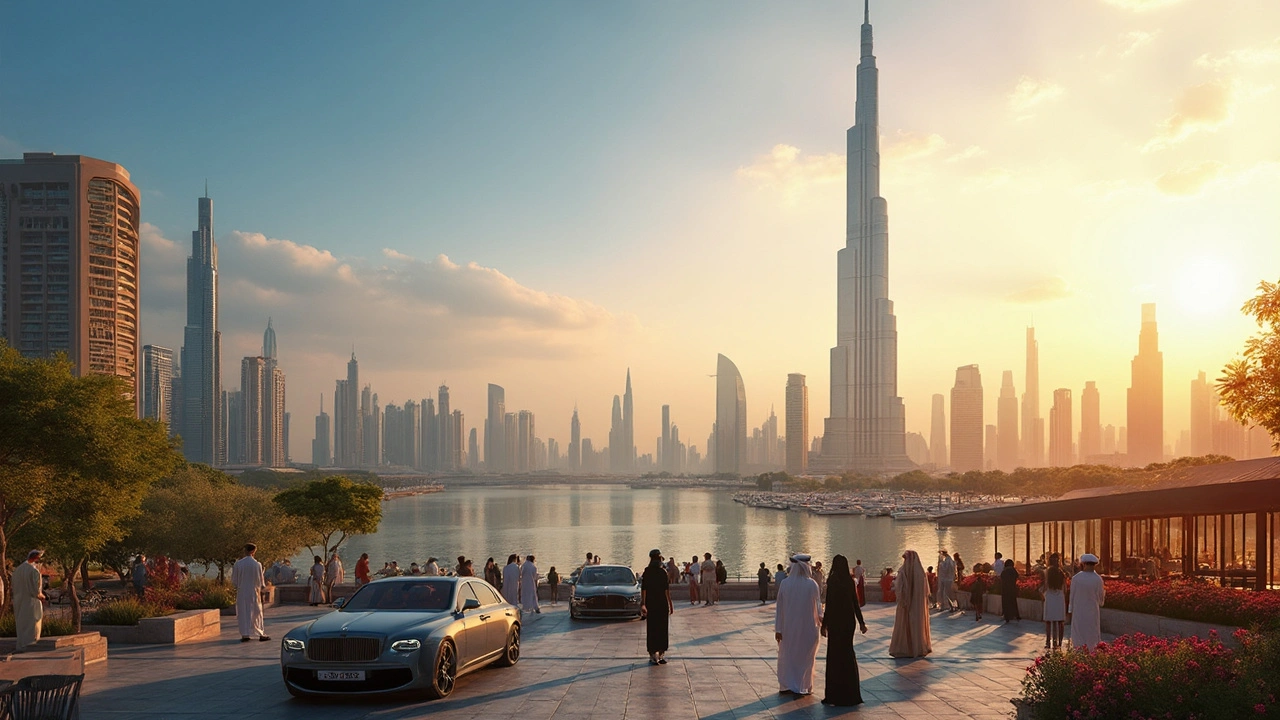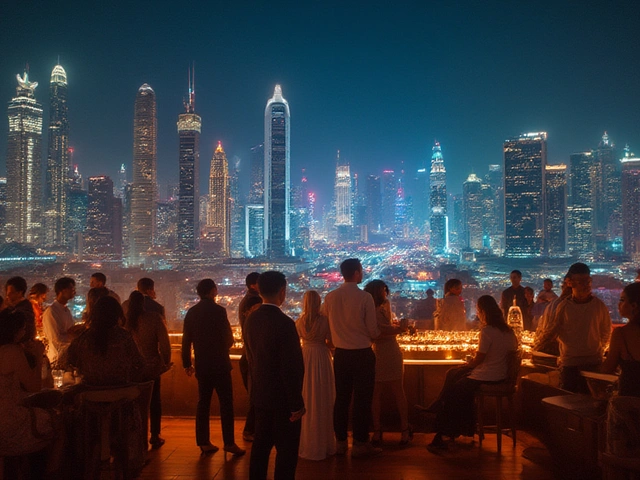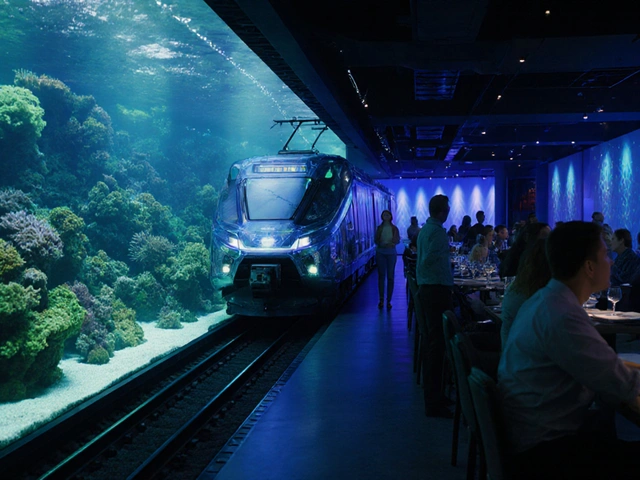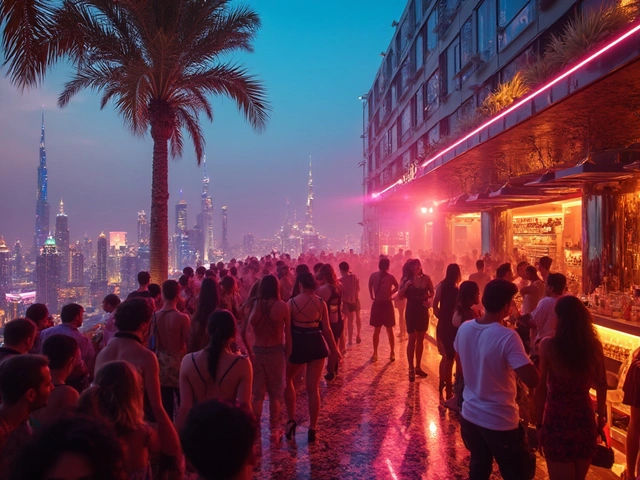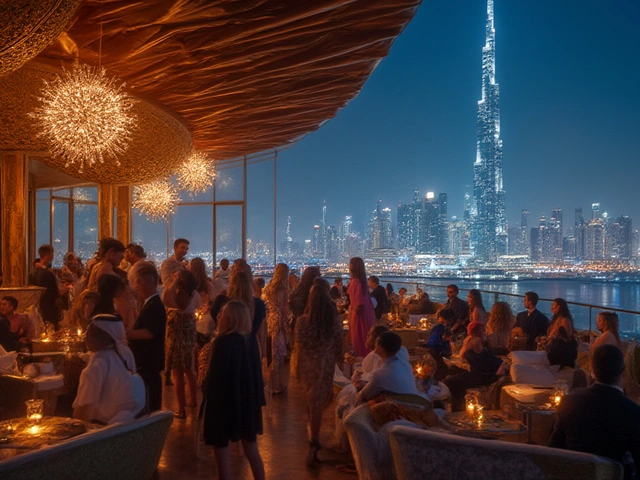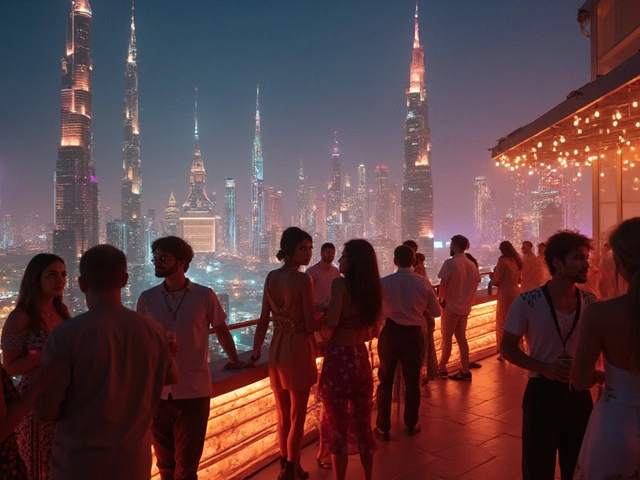Just saying you’re in Dubai brings up a mental picture for most people: the Burj Khalifa bursting right through the clouds. Locals pass it on Sheikh Zayed Road or spot it from the airy beaches of Jumeirah. But for those living here, it’s not just about breaking a world record—this tower’s in our daily routines, our Instagram stories, and even our traffic jams.
If you’re thinking about a visit, know this: booking tickets early (especially for sunset slots at At The Top) can save you both money and hours wasted in line. The Dubai Fountain show right outside the tower draws massive crowds in the evening—grabbing a table at one of The Dubai Mall’s terrace cafes gives you a front-row seat without the hassle.
Downtown Dubai has grown up around the Burj Khalifa. It’s not just a thing to see—it sets the tone for property values, kickstarts new events nearly every week, and turns every passing national holiday into a laser-lit festival. Understanding the Burj is kind of like understanding how Dubai ticks: it’s bold, always busy, and never does anything halfway.
- A Dubai Icon: More Than Just Height
- Living and Working Above the Clouds
- Visiting Tips and Experiences Worth Booking
- Local Life: The Burj in Everyday Dubai
A Dubai Icon: More Than Just Height
The Burj Khalifa dominates Dubai’s skyline, but there’s more to its fame than just its mind-blowing height of 828 meters. When it opened back in 2010, it set new standards for what a city could look like—and made Dubai a global talking point. Plenty of super-tall towers have popped up since, but none come close in terms of cultural impact or the influence on city life here.
Look at the nitty-gritty: the Burj Khalifa holds the record for the highest occupied floor, highest outdoor observation deck, and even the world’s highest restaurant (At.mosphere on the 122nd floor). The building’s shimmering design takes real cues from the desert hyacinth, a plant native to the region, so it’s not just a chunk of steel and glass—there’s a story behind its shape.
The Burj isn’t just about numbers. It’s about being at the center of things. National Day, New Year’s, Diwali—any major celebration turns the tower into a giant LED canvas seen by millions. In Ramadan, its lighting changes and local TV even times iftar to the Burj’s views (it takes longer for the sun to set on higher floors).
- The tower has 57 elevators—one can zip you up over 500 meters in a matter of seconds.
- People from all over the world helped build it, speaking over 100 different languages on the construction site.
- Its daily water usage? Around 946,000 liters, enough to fill nearly 400 Olympic swimming pools in a year.
| Fact | Details |
|---|---|
| Height | 828 meters (2,717 feet) |
| Floors | 163 plus 2 basement levels |
| Elevators | 57 |
| Observation decks | 124, 125, and 148 |
| Opening Year | 2010 |
For anyone making Dubai home, or just passing through, this isn’t a landmark you tick off your list and forget. It’s part of the city’s identity. You meet friends under it. You plan photoshoots around it. Even morning commutes get rerouted because of an event at the podium. The Burj Khalifa isn’t just the tallest—it’s woven right into Dubai’s everyday DNA.
Living and Working Above the Clouds
Here’s what most people don’t realize: the Burj Khalifa isn’t just a look-but-don’t-touch wonder. Real people actually live and work here. Over 900 private residences fill the tower, packed from floor 19 to 108. You’ll find studios, one to four-bedroom flats, and some ridiculous penthouses with 360-degree views—if you’ve ever glanced at #BurjKhalifaViews on Instagram, you know these windows are basically giant screensavers for the Burj Khalifa and Downtown Dubai.
Getting into the building isn’t cheap. Residents are looking at annual service fees (AED 55 per sq ft, if you’re curious), but that covers access to indoor and outdoor swimming pools, gym spaces with skyline views, and even a library (yes, there’s both paper and digital books). If your workplace is based in the Burj, odds are it’s on the 112th to 154th floors—these offices come with serious bragging rights and, honestly, some of Dubai’s fanciest business lounges.
Don’t forget the Armani Hotel Dubai, which runs from the first eight floors and covers 160 rooms. This place basically invented ‘designer living’ here in the UAE, and it’s still a hotspot for work meetings, staycations, or just catching up over their signature Italian espresso.
| Burd Khalifa Stats (Residential & Offices) | Numbers |
|---|---|
| Private Residences | 900+ |
| Office Floors | 37 |
| Elevator Speed | Up to 10 m/s |
| Residents-Only Gyms | 2 |
| Swimming Pools | 4 |
| Armani Hotel Guest Rooms | 160 |
What’s daily life like? Supermarkets don’t deliver straight to your door up here (the security is tight), but most residents have a shortcut to Dubai Mall—imagine picking up groceries at Waitrose or a quick meal at Zuma in the same trip. For office folks, security is no joke—check-ins and access passes are part of the routine. But nothing beats that view when you’re grabbing a coffee in the Sky Lobby, looking out over the whole city.
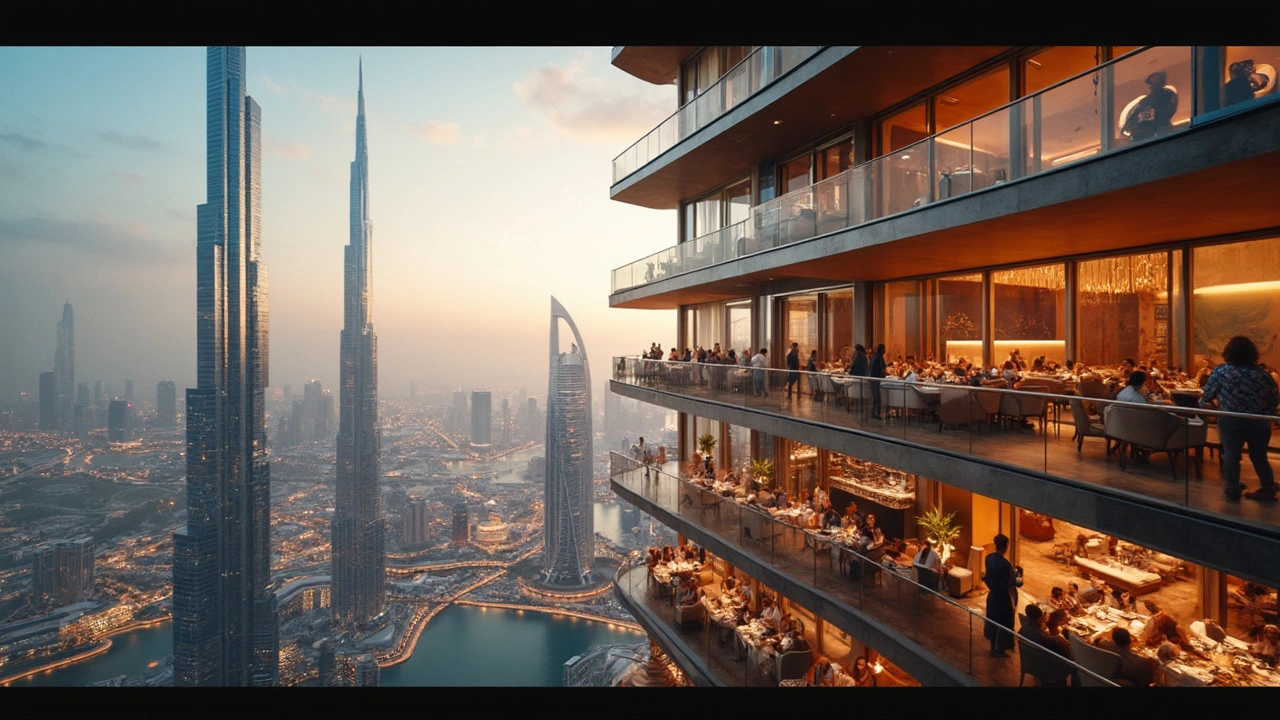
Visiting Tips and Experiences Worth Booking
If you’re planning to see the Burj Khalifa up close, a little know-how goes a long way. First, book your tickets online for the "At The Top" observation decks. Walk-in tickets are usually pricier and can mean waiting for well over an hour. Prime visiting times—like sunset (around 6:30 PM)—sell out fast, especially on weekends and public holidays.
The main observation decks are on levels 124 and 125, but if you want a quieter, more premium experience, opt for Level 148. This one gets you a sky lounge, some snacks, and smaller crowds. Check out the different ticket types:
| Deck Level | Ticket Price (AED) | Experience |
|---|---|---|
| 124/125 | 159 (non-prime), 259 (prime) | Standard observation, open-air terrace |
| 148 | 399 (non-prime), 553 (prime) | Premium lounge, fewer people |
Once inside, security check is strict—no glass bottles or large bags. Dress code is relaxed, but you’re in Dubai; so, keep it modest, especially if you go straight to eateries at Burj Khalifa or The Dubai Mall after.
Here’s what most Dubai residents recommend for a smooth visit:
- Go early or late: Before 11 AM or after 8 PM, the decks are less crowded.
- Time your visit with the Dubai Fountain show: The decks offer a killer overhead view. Shows run every 30 minutes from 6 PM.
- Try Atmosphere Lounge: Book in advance for drinks or afternoon tea on level 122—it’s not just for Instagram; the view is unreal and you dodge the observation deck crowds.
- Parking is easy: Park at The Dubai Mall, Fashion Parking zone; Burj Khalifa Lobby is directly connected.
- Special experiences: Occasionally there are sunrise yoga classes and New Year’s packages—these are worth the splurge for long-term Dubai folks and regulars.
Photography tip: The glass sometimes causes glare, so bring a lens cloth and angle your camera to avoid reflections. For the bold, outside the main lobby is the spot for classic Burj selfies, best in the morning before groups arrive.
Don’t forget, this area gets busy during National Day, Expo events, and weekends—so factor in extra travel time if you don’t want to be late. Lastly, locals love late-night walks here; the area around the tower feels safe and lively pretty much all hours.
Local Life: The Burj in Everyday Dubai
When you live in Dubai, the Burj Khalifa becomes way more than just a tourist spot. Whether you’re in a taxi headed to a friend’s place in Downtown or grabbing karak tea at a kiosk near Business Bay, the world’s tallest building is always somewhere in view. It’s the go-to landmark for giving directions—try telling a delivery guy where your apartment is without mentioning the Burj, and good luck.
Events sprawl around the Burj year-round. Ramadan brings a massive nightly crowd for iftar tents and pop-up food stalls at Burj Park. On UAE National Day, you’ll see large families picnicking on the grass while kids snap photos with the flag lit up on the tower’s side. Every New Year’s Eve, the Burj Khalifa’s fireworks attract over a million people. Metro stations nearby, especially Burj Khalifa/Dubai Mall, get packed hours before midnight, so most locals know to book tables early at restaurants like Social House or Armani/Mediterraneo for a hassle-free view.
"The Burj Khalifa isn’t just impressive because of its height; it’s how it has become stitched into the social and cultural fabric of Dubai. It’s our meeting point and our backdrop for pretty much every celebration." — Khalid Al Suwaidi, spokesperson, Emaar Properties
If you work at any of the office spaces in Emaar Square or nearby Boulevard Plaza, you’ll notice how the morning rush is often timed around the Burj Khalifa’s light shows or the best time to catch the elevator up for a quick view. School buses reroute on big event days to avoid crowd bottlenecks. Delivery bikes use its outline as their north star.
Rental prices in Downtown are on the higher side, mostly due to the views. According to data from Bayut for 2024, the average annual rent for a one-bedroom apartment near the Burj was around AED 120,000. Still, plenty of expats swear by the lifestyle.
| Everyday Life Around Burj Khalifa | Details |
|---|---|
| Nearest Metro Station | Burj Khalifa/Dubai Mall |
| Coffee Spots with Views | Café Bateel, Caribou Coffee (Boulevard), Starbucks (Ground Level) |
| Events Per Year | 100+ with large public gatherings |
| Average Rent (1BR, Downtown) | AED 120,000 (2024) |
Lots of Dubai residents use the Burj Khalifa for evening walks, especially around Burj Park and the Dubai Fountain Lake promenade. For fitness, the stair run up the Burj is on every local athlete’s bucket list—the Vertical Marathon happens yearly, with stairs all the way up to level 160. If you plan to join, register online quick, the slots go fast.
So if you’re new in Dubai, don’t just stop for a selfie. Find yourself in a crowd at one of the events, join a sunrise yoga session at the top, or just chill outside with a warm cup of karak in the shadow of the Burj. Everyday Dubai life keeps spinning, but somehow, it usually revolves around this tower.

